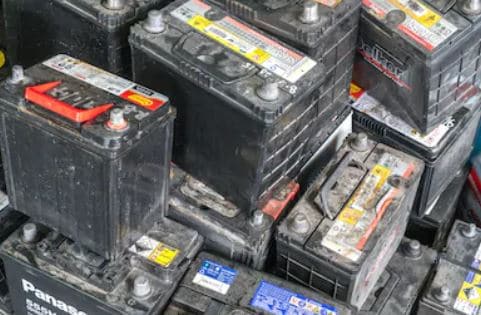Battery Recycling The Right Way
Battery Recycling
There are many types of batteries in use today and with the increasing spread of electronics, the demand for batteries will continue to increase, A natural consequence of this is that batteries have to be disposed of at the end of their life. This is accomplished by battery recycling.
Of all of the batteries in use, the lead-acid battery is the most valuable in terms of recycling.
Lead-Acid Batteries
Lead-acid batteries are an essential part of the global economy and power production industry. They are needed in electronic equipment, motor vehicles, for the storage of the energy generated by solar cells and wind turbines, and for back-up power in both the consumer market and critical industrial systems.
In developing nations where grid power supply is erratic and in some cases absent, lead batteries are used for lighting and powering electrical appliances. As these countries continue to grow and the need for solar energy continues to grow, so does the demand for storage batteries. This increase in demand has been met by primary lead production from mines and through recycling. It is now estimated that up to half of the global use of lead is from recycling.
Today, rechargeable lead-acid batteries are the most recycled products in the world as up to 90% of all of them are now recycled.
According to a report prepared by the World Health Organization, lead recycling is an important source of environmental damage and human exposure to lead in many countries. This is why battery recycling needs to be done in a regulated and controlled manner. We ensure that all battery recycling is done in accordance with best practices.

What Is Battery Recycling?
Battery recycling can be defined as the reuse and reprocessing activities performed on batteries as a means of reducing the number of batteries disposed of as environmental waste. Battery recycling was initially done to increase the efficiency of lead usage, but today it is done mostly as a means of reducing global environmental pollution.
The chemicals found in batteries are toxic and many of them can contaminate the water and soil if they are just dumped into landfills.
The Process of Battery Recycling
Nearly all batteries can be recycled and while some are easy to recycle, others can be very difficult to recycle to the point that it is not economically viable to recycle them. It is for this reason that we have to make a disposal charge for most types of battery, other than lead-acid.
Lead batteries are the most recycled batteries (with up to 99% recyclability) due to how valuable lead is and the negative environmental impact of lead. Other batteries such as lithium-ion, nickel-zinc, nickel-metal hydride, and nickel-cadmium are also recyclable.
Lithium-Ion Batteries
Lithium-Ion (Li-ion) batteries are becoming more popular as the need for them increases with the growth in electric vehicles (EVs), as well as the smaller versions commonly used in power tools. Lithium is not only used in battery production; it is also used in the production of pharmaceuticals and glassware, as well as some construction materials.
This additional demand, coupled with the geopolitical factors that could influence access to the raw material means that it is important to recover and re-use lithium whenever possible.
